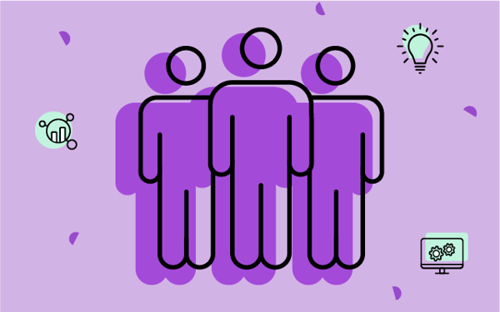This is a Crayon guest post from one of our partners, Fletcher. Visit the Crayon Partner Directory to learn more!
So, you've started your Compete program... What more should you do?
As a CI professional, you’re striving to develop a program that adds value to sales in the field and leadership strategy, and delivers a competitive advantage in your market. The current reality in the tech industry is this is often done from scratch.
One of the challenges in this rapidly changing arena is: When is your program considered complete?
Let’s use a simple analogy to visualize this. Your competitive intelligence program starts as an empty glass vase. That’s you, congrats, you got the job!
And your goal now is to fill that vase as much as possible and practically. When it’s full, you’re providing not just value to your company, but an actual competitive advantage in your market.
Your first step was likely seeking secondary information regarding competitors, topics, keywords etc. In other words, publicly available information from the web, and you probably started with Google alerts or some other widely available tool. Then you realized you needed an intelligent platform (like Crayon) to do so efficiently and help you manage and share the data.
The first thing you do to try to fill your vase before your competition does is put some larger objects in there. Let’s think of that big foundational part of your program as putting some rocks in that vase and it starts to look pretty full. Get Crayon in place and you’re on your way!
We can build on this though.
It’s important to do, it’s necessary, you’re keeping up, but your competitors may be doing something similar as well. OK, what more can we fit in there? Let’s try some form of win loss analysis. This tells you and your sales teams how to win more, lose less, and where you stand relative to our competitors.
I want to clarify, from working with Fortune 50 companies as well as startups, and years of experience: Win/Loss is sometimes managed separately from other competitive functions by Sales Enablement. I love Sales Enablement, but don’t let it be separate from Competitive Intelligence in your mind. They’re not only connected; Win/Loss Analysis is part of Competitive Intelligence.
Now we need to start filling in important gaps.
Some start by conducting a process internally, pulling CRM data, and collecting intel from salespeople, maybe using a survey tool. You’re getting some visibility with your sales teams and from leadership. You may be getting battlecards together. OK, your vase is looking pretty full!
If you’re well underway and perhaps you’ve earned further budget to develop your program, the next step many aspire to is in-depth win/loss interviews through a third party to ensure objective results. This is a sound foundation to a mature real-time competitive intelligence program. We’re filling the gaps with finer tools. We’re pouring in sand and it’s taking in a lot. That vase is getting heavy.
One thing I’ve learned at Fletcher is that the best win/loss programs will often reveal little (or big) gaps in knowledge. Examples of this may be:
- How does this killer feature we’re hearing about work?
- How do they demo their products?
- What is in their future roadmap and are they talking about it?
Or in our battle cards:
- What are really their weaknesses?
- What DOESN’T work well?
- What does their sales team NOT like about their solution?
Often the last element to ensure a complete program is targeted custom primary research. It’s a special skill set usually done by a third-party agency. This is for a few reasons: skill set, access, manpower, ethical guidance, etc. It requires finding certain people, asking specific questions, and analyzing the information properly.
Those specific questions are the gaps left in your program. Categorically, primary research is custom, real-time information that is not publicly available. In other words: Competitive Advantage. It is a rare firm that can conduct both win/loss analysis and primary research projects as a “complete compete” solution, but we do exist.
So, how much water do you think you can pour into that "full" vase?
If you’ve ever done this exercise in school, it’s always shocking how much can still fit.
An important factor I’ve seen from clients regarding primary research project outcomes: These insights usually get Executive-level visibility. You will engage much more in C-level and product strategy at this point, in addition to sales and marketing teams.
As a member of our savvy Crayon user community, you have likely heard plenty about the advantages of a win/loss analysis program and probably a bit about primary research. As you see, it doesn’t need to be too complicated structurally. It may make things simpler once you realize win/loss and primary research projects can/should be intertwined.
And of course, as with most things in life, you’re never really done.

Related Blog Posts
Popular Posts
-
 How to Create a Competitive Matrix (Step-by-Step Guide With Examples + Free Templates)
How to Create a Competitive Matrix (Step-by-Step Guide With Examples + Free Templates)
-
 The 8 Free Market Research Tools and Resources You Need to Know
The 8 Free Market Research Tools and Resources You Need to Know
-
 Sales Battlecards 101: How to Help Your Sellers Leave the Competition In the Dust
Sales Battlecards 101: How to Help Your Sellers Leave the Competition In the Dust
-
 6 Competitive Advantage Examples From the Real World
6 Competitive Advantage Examples From the Real World
-
 How to Measure Product Launch Success: 12 KPIs You Should Be Tracking
How to Measure Product Launch Success: 12 KPIs You Should Be Tracking



